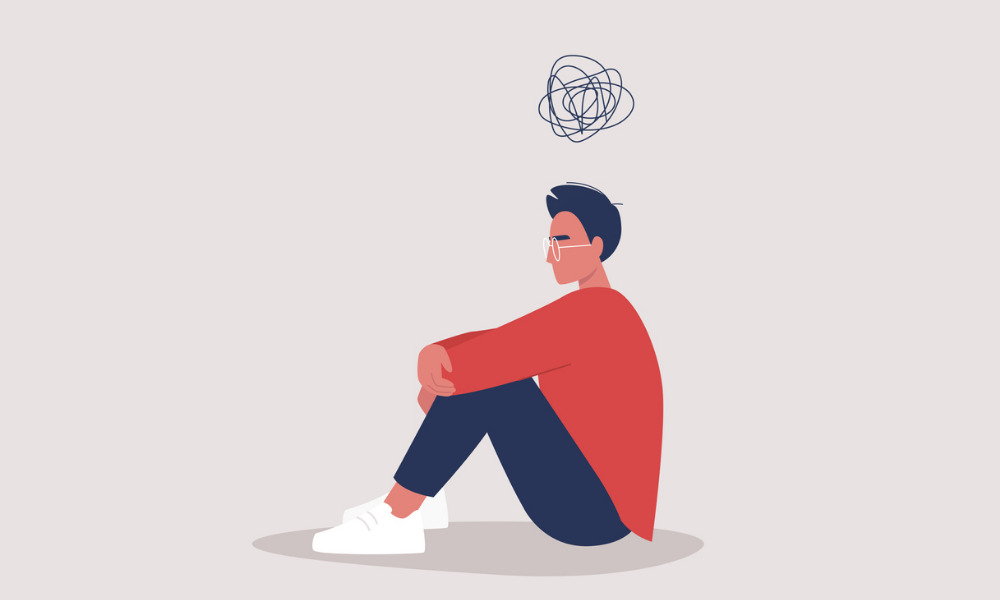
Do you have a deep-rooted fear of your inbox?

It’s 3.15am Monday morning. While the rest of the world sleeps soundly, you’re twitching to turn on the bedside lamp. You’re edging towards your phone. It’s been buzzing on and off, sounding in the dark, which can mean only one thing.
Emails are waiting.
You think, I’ll just take a quick peek – a quick look then back to sleep. There’s no harm in that, right? After all, maybe it’s urgent. Maybe it’s my manager. Maybe it’s my CEO. Maybe the company’s been liquidated and everyone’s been fired and it’s all my fault!
Sound familiar? You, my friend, have email anxiety. And you’re not alone.
Read more: Measuring the ROI: How to show diversity’s value
Email anxiety is a deep-rooted fear of looking through your inbox – coupled with an innate inability not to. Striking any time day or night, sufferers feel intense anxiety around their inbox – worried about both receiving emails and having to read them. The average employee spends around four hours each day reading and responding to messages – with most workers receiving up to 120 emails every day. For employees suffering with anxiety, each day is a battle between wanting to be productive and being paralysed by nerves.
While email anxiety is nothing new, it has become more prevalent since COVID-19. Now, with employees working from their homes, work-life balance is even more difficult to attain. The added pressure of the current pandemic, coupled with increased working hours and C-suite expectations, is leading to a mental health crisis. And, if HR doesn’t act quickly, we’re going to see psychological wellbeing take a massive hit.
The link between technology and stress was debated by Dr Gini Harrison, Dr Mathijs Lucassen in their recent study Stress and anxiety in the digital age. In this research, they theorized that we’re becoming overly dependant on our phones, leading to perpetual distraction and poor sleep habits.
“Looking at our phones when we should be going to sleep has the double whammy effect of over-stimulating our brains, making it hard to wind down and switch off, and exposing us to blue light from the screen,” they explained. “Research suggests that blue screen exposure can reduce melatonin production, which interrupts our circadian rhythm (i.e. sleep-waking cycles), making it harder for us to fall, and stay, asleep. Unfortunately, poor sleep tends to mean poorer resilience and higher levels of anxiety and stress.”
Read more: These are the best companies for women in 2021
When you consider that a lot of employees have their work emails on their smart devices – it’s clear that this need to be constantly connected is wrecking our mental, physical, and emotional health.
So, what’s to be done? Well, the easiest option would be to take your emails off of your mobile phone. And while we do recommend that, it doesn’t stop the stress and anxiety surrounding in-office, desktop, messages. If the issue is simply being overloaded with too many emails, speak to your manager and raise the issue with them. We’re all guilty of CC’ing people into emails when they don’t really need to be there – so, before you send any messages, be cognizant of this. Look through the recipients. Do they all have to be there? Can you remove any? If this is implemented as best practice across the whole company, believe me, you’ll see a dramatic drop in email volume.
Another option is to add an Out Of Office folder to your inbox. Any messages that come through when you’re technically ‘off the clock’ will go into a sperate file for you to check during working hours. With certain email accounts, you can add a reminder that will pop up if you try to email someone outside of their allotted schedule. This acts as a first line of defence should employees get too trigger happy with late night messages.
Angela Champ, SVP of HR at Alpine Building Maintenance, recommends a complete inbox cleanse – removing all unwanted toxins from your account.
“Unsubscribe from any newsletters or emails that no longer add value or help you do your job,” she told HRD. “From there, set aside certain blocks within your day to read and respond to emails, rather than reading them continuously, and turn off the notifications so you're not tempted to check. Finally, I’d say that if a message thread is longer than three emails deep, pick up the phone. So much more can be resolved with a five-minute call than a super long email chain.”
When it comes to addressing the issue of unmanageable anxiety, take a step back and breathe. The pandemic has us all in a spin, working constantly, developing unhealthy habits, and feeling burned out. When the panic sets in, walk away from your desk and step outside for a few moments. Go for a walk, practice some mindfulness, and realise that whatever this email says, it’s not the end of the world. As with most anxiety, it’s not the end result we fear, it’s the fear of fear that’s debilitating.
For employers, if you want to help your workers through email stress, you too have to become more self-aware and take some accountability.
“Knowing your recipient is key,” Dr Melanie Peacock, associate professor of HR, told HRD. “This is why, especially in a virtual world, we need to take the time to build opportunities for people to develop interpersonal relationships with one another. Trust doesn't just appear; it’s created and nurtured. When one trusts the recipient email anxiety is lessened.”